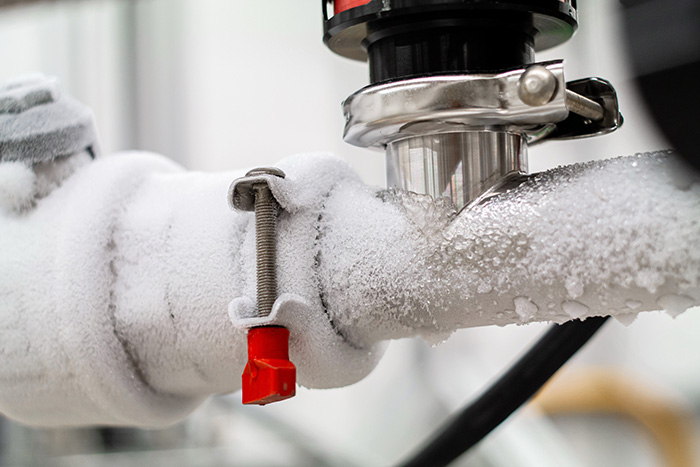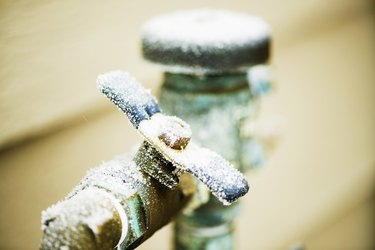On this page down the page you might get some very good content about Helpful Tips to Prevent Frozen Pipes this Winter.

Winter can ruin your pipes, specifically by freezing pipelines. Below's exactly how to avoid it from occurring and what to do if it does.
Introduction
As temperatures decline, the risk of icy pipelines boosts, potentially leading to pricey repair services and water damage. Understanding just how to stop icy pipes is critical for house owners in cold environments.
Prevention Tips
Shielding susceptible pipelines
Wrap pipelines in insulation sleeves or utilize warmth tape to safeguard them from freezing temperature levels. Focus on pipelines in unheated or exterior areas of the home.
Home heating methods
Maintain indoor spaces properly heated, especially areas with pipes. Open up closet doors to allow warm air to distribute around pipelines under sinks.
How to identify frozen pipelines
Look for decreased water flow from faucets, unusual odors or noises from pipes, and visible frost on exposed pipes.
Long-Term Solutions
Structural changes
Consider rerouting pipelines far from outside walls or unheated areas. Add added insulation to attic rooms, cellars, and crawl spaces.
Updating insulation
Purchase top notch insulation for pipes, attics, and wall surfaces. Appropriate insulation helps maintain regular temperatures and minimizes the risk of icy pipes.
Protecting Exterior Plumbing
Yard hose pipes and exterior faucets
Separate and drain garden tubes before winter. Set up frost-proof faucets or cover exterior faucets with protected caps.
Recognizing Icy Pipes
What triggers pipelines to freeze?
Pipes freeze when subjected to temperature levels listed below 32 ° F (0 ° C) for extended periods. As water inside the pipes freezes, it expands, putting pressure on the pipe wall surfaces and potentially triggering them to break.
Risks and damages
Icy pipes can cause water system disturbances, home damage, and expensive fixings. Ruptured pipelines can flooding homes and create extensive structural damages.
Indicators of Frozen Water Lines
Recognizing icy pipes early can prevent them from bursting.
What to Do If Your Pipelines Freeze
Immediate activities to take
If you think frozen pipelines, keep faucets available to ease pressure as the ice thaws. Use a hairdryer or towels taken in hot water to thaw pipes gradually.
Conclusion
Protecting against frozen pipelines needs positive actions and quick feedbacks. By comprehending the reasons, signs, and safety nets, homeowners can secure their pipes throughout winter.
5 Ways to Prevent Frozen Pipes
Drain Outdoor Faucets and Disconnect Hoses
First, close the shut-off valve that controls the flow of water in the pipe to your outdoor faucet. Then, head outside to disconnect and drain your hose and open the outdoor faucet to allow the water to completely drain out of the line. Turn off the faucet when done. Finally, head back to the shut-off valve and drain the remaining water inside the pipe into a bucket or container. Additionally, if you have a home irrigation system, you should consider hiring an expert to clear the system of water each year.
Insulate Pipes
One of the best and most cost-effective methods for preventing frozen water pipes is to wrap your pipes with insulation. This is especially important for areas in your home that aren’t exposed to heat, such as an attic. We suggest using foam sleeves, which can typically be found at your local hardware store.
Keep Heat Running at 65
Your pipes are located inside your walls, and the temperature there is much colder than the rest of the house. To prevent your pipes from freezing, The Insurance Information Institute suggests that you keep your home heated to at least 65 degrees, even when traveling. You may want to invest in smart devices that can keep an eye on the temperature in your home while you’re away.
Leave Water Dripping
Moving water — even a small trickle — can prevent ice from forming inside your pipes. When freezing temps are imminent, start a drip of water from all faucets that serve exposed pipes. Leaving a few faucets running will also help relieve pressure inside the pipes and help prevent a rupture if the water inside freezes.
Open Cupboard Doors
Warm your kitchen and bathroom pipes by opening cupboards and vanities. You should also leave your interior doors ajar to help warm air circulate evenly throughout your home.

We were shown that report on How to Prevent Your Pipes From Freezing through a pal on our other blog. In case you enjoyed our blog posting kindly do not forget to share it. Thanks for going through it.
Here